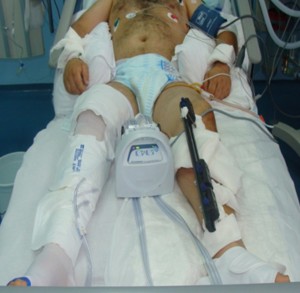Mechanical thrombo-prophylaxis devices have the potential to reduce venous thrombo-embolism (VTE) events without the risk of precipitating haemorrhage. This is pertinent especially for patients undergoing elective/emergency surgery or in trauma patients.
MEHMET KURTOGLU Despite pharmacological prophylaxis, 50% of surgical patients with a Caprini score > 10 develop a VTE in the postoperative period. This suggests that anticoagulation alone may not be sufficient, especially in these high risk patients. Clinical studies demonstrate that the clot nidus starts to form during the time of surgery. If pharmacological prophylaxis is initiated in the postoperative period this may be suboptimal because high risk patients may have already developed a thrombus. Prophylactic doses of anticoagulants are usually not effective at treating established thrombosis. Therefore, VTE prophylaxis should start at the time of anaesthetic induction. However, pharmacological agents may not be appropriate at this time because of the associated risk of bleeding.
Mechanical modalities, like intermittent pneumatic compression (IPC) devices, have proven effectiveness in reducing VTE in trauma and high bleeding risk patients. They should be started in the beginning of the operation and then continued together with pharmacological prophylaxis in the postoperative period until full ambulation. Furthermore, there is strong evidence that application of IPCs to any limb, including the foot is sufficient for their prophylactic effect. This makes them suitable for almost any type of surgery. In high VTE risk patients for whom IPCs or pharmacological agents are not feasible, close surveillance with duplex ultrasound is safer than prophylaxis with temporary vena cava filters. This is because filters themselves can precipitate a DVT and there are several reported early and late complications associated with their insertion and retrieval.
Combined pharmacological and mechanical prophylaxis should be utilized more frequently in surgical patients who have high risk for VTE.
An IPC device on the left foot below a compound fracture in a trauma patient with a high bleeding risk
